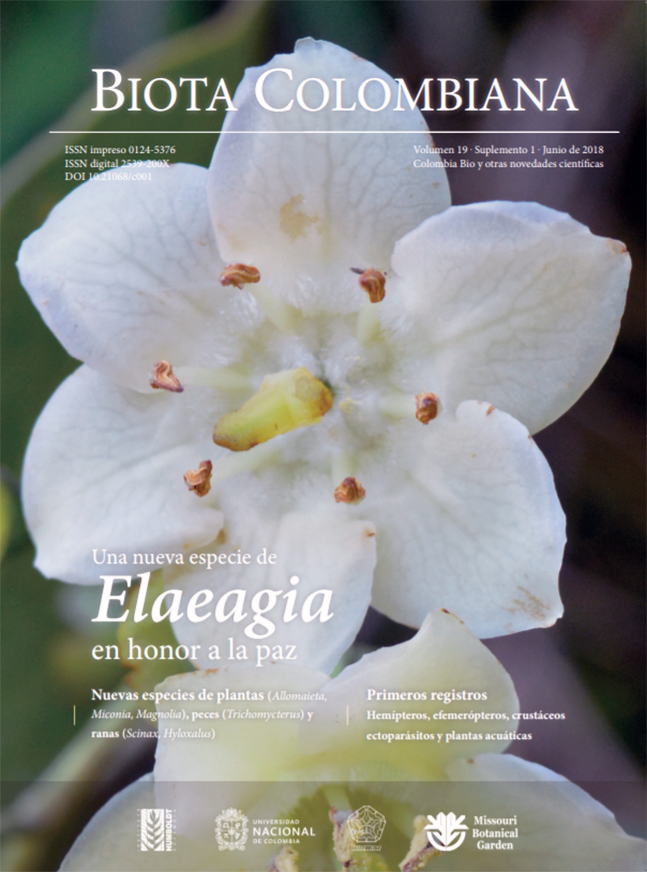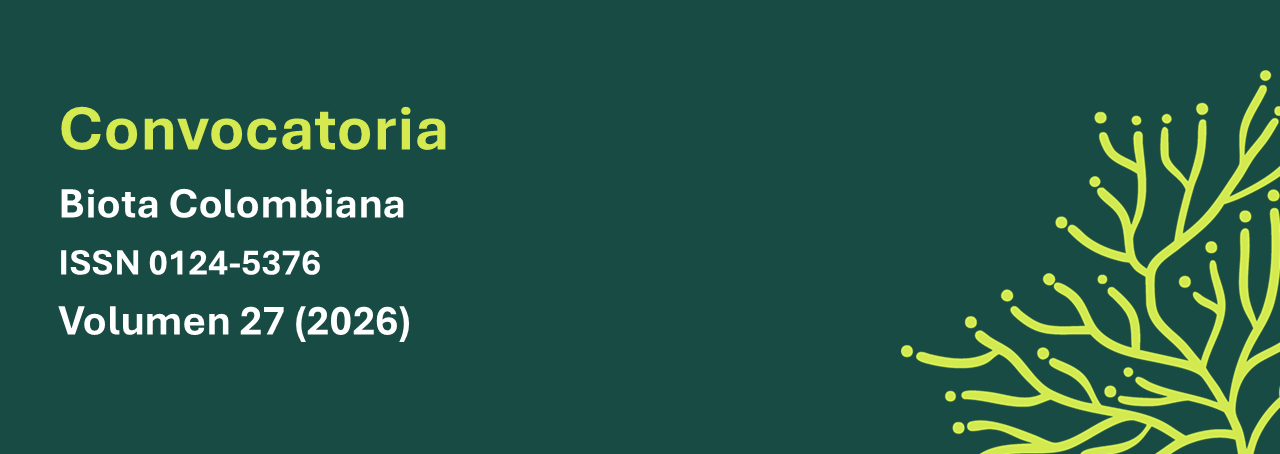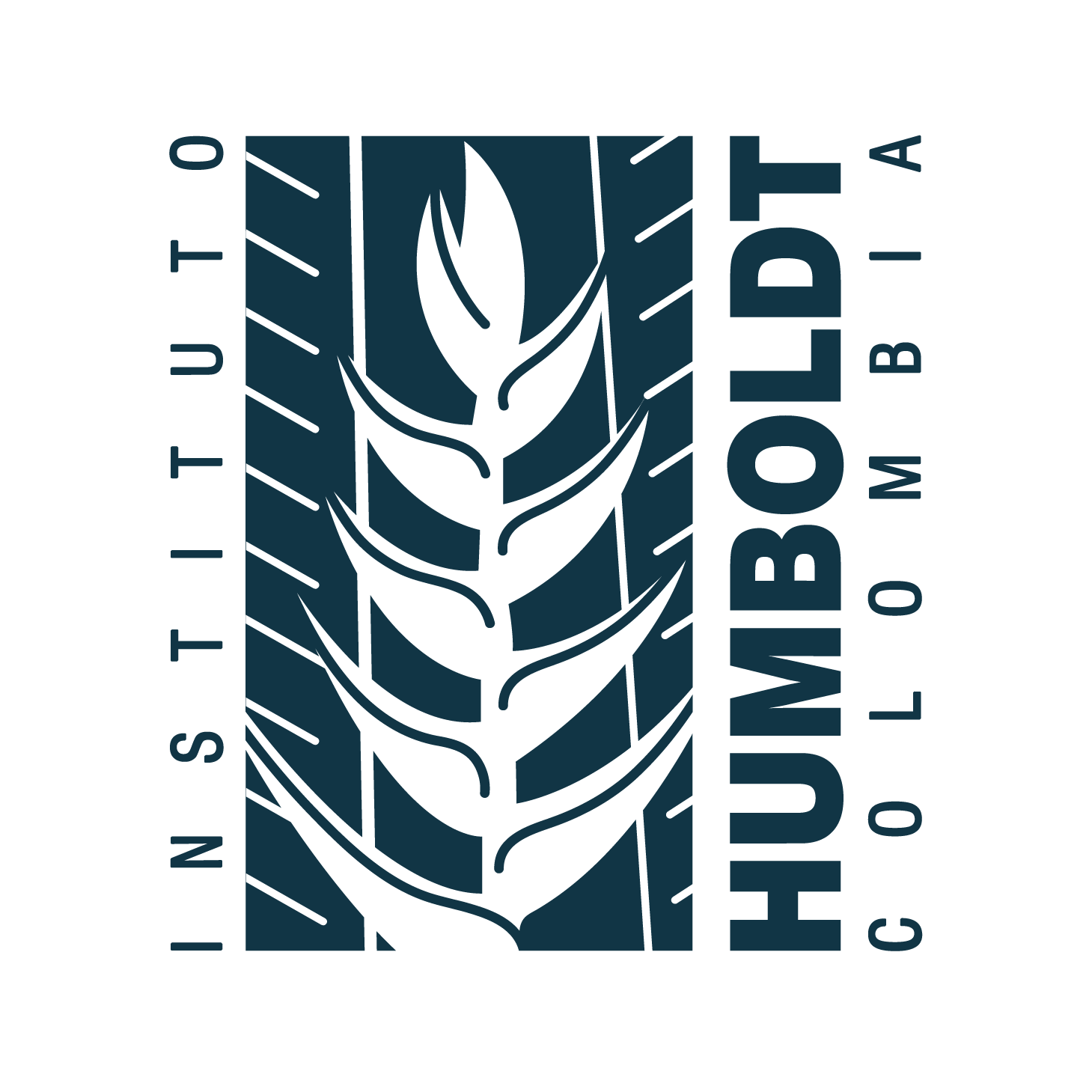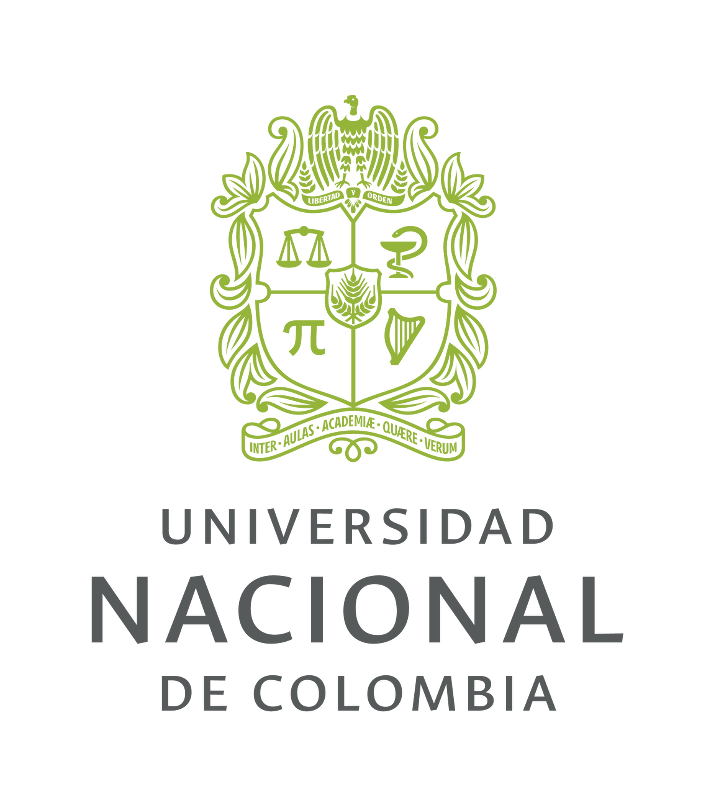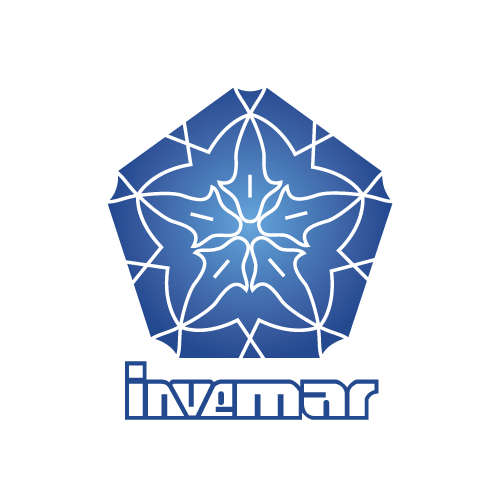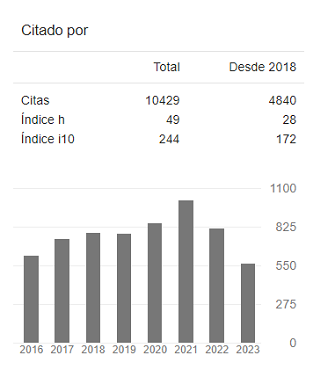Resumen (es):
Resumen (en):
Palabras clave:
Cave fish, Karstic, Middle Magdalena River basin, Santander (en)
Referencias
Arratia, G. (1983). Trichomycterus chungaraensis n. sp. and Trichomycterus laucaensis n. sp. (Pisces, Siluriformes, Trichomycteridae) from the high Andean range. Studies on Neotropical Fauna and Environment, 18 (2): 65-87.
Arratia, G. (1998). Silvinichthys, a new genus of trichomycterid catfishes from the Argentinian Andes, with redescription of Trichomycterus nigricans. Ichthyological Exploration of Freshwaters, 9 (4): 347-370.
Arratia, G & Huaquin, L. (1995). Morphology of the lateral line system and of the skin of diplomystid and certain primitive loricarioid catfishes and systematic and ecological considerations. Bonner Zoologische Monographien, 36: 1-110.
Campos-Paiva, R. M. & Costa, W. J. E. M. (2007). Ituglanis paraguassuensis sp. n. (Teleostei: Siluriformes: Trichomycteridae): a new catfish from the rio Paraguaçu, northeastern Brazil. Zootaxa, 1471: 53-59.
Chakrabarty, P., Warren, M., Page, L. M. & Baldwin, C. C. (2013). GenSeq: An updated nomenclature and ranking for genetic sequences from type and non-type sources. ZooKeys, 346: 29-14.
Costa, W. J. E. M. & Bockmann, F. A. (1993). Un nouveau genre néotropical de la famille des Trichomycteridae (Siluriformes: Loricarioidei). Revue Française d’Aquariologie -Herpétologie, 20(2): 43-46.
Datovo, A. & Bockmann, F. A. (2010). Dorsolateral head muscles of the catfish families Nematogenyidae and Trichomycteridae (Siluriformes: Loricarioidei): comparative anatomy and phylogenetic analysis. Neotropical Ichthyology, 8 (2):193-246.
DoNascimiento, C. (2015). Morphological evidence for the monophyly of the subfamily of parasitic catfishes Stegophilinae (Siluriformes, Trichomycteridae) and phylogenetic diagnoses of its genera. Copeia, 103 (4): 933-960.
DoNascimiento, C., Prada-Pedreros, S. & Guerrero-Kommritz, J. (2014a). Trichomycterus venulosus (Steindachner, 1915), a junior synonym of Eremophilus mutisii Humboldt, 1805 (Siluriformes: Trichomycteridae) and not an extant species. Neotropical Ichthyology, 12 (4): 707-715.
DoNascimiento, C., Prada-Pedreros, S. & Guerrero-Kommritz, J. (2014b). A new catfish species of the genus Trichomycterus (Siluriformes: Trichomycteridae) from the río Orinoco versant of Páramo de Cruz Verde, Eastern Cordillera of Colombia. Neotropical Ichthyology, 12 (4): 717-728.
Drummond, A. J., Ho, S. Y. W., Phillips, M. J. & Rambaut, A. (2006). Relaxed phylogenetics and dating with confidence. PLoS Biology, 4 (5): e88. https://doi.org/10.1371/journal.pbio.0040088.
Drummond, A. J., Suchard, M. A., Xie, D. & Rambaut, A. (2012). Bayesian phylogenetics with BEAUti and the BEAST 1.7. Molecular Biology and Evolution, 29 (8): 1969-1973.
Eschmeyer, W. N. & Fong, J. D. (2017). Species by family/subfamily. Retrieved on August 22, 2017 from http://researcharchive.calacademy.org/research/ichthyology/catalog/SpeciesByFamily.asp.
Fernández, L. A. (2006). Two new patterns of the supraorbital canal in trichomycterids (Siluriformes: Trichomycteridae). Acta Zoológica Lilloana, 50: 115-117.
García-Melo, L. J., Villa-Navarro, F. A. & DoNascimiento, C. (2016). A new species of Trichomycterus (Siluriformes: Trichomycteridae) from the upper río Magdalena basin, Colombia. Zootaxa, 4117 (2): 226-240.
Kimura, M. (1980). A simple method for estimating evolutionary rates of base substitutions through comparative studies of nucleotide sequences. Journal of Molecular Evolution, 16 (2): 111-120.
Kumar, S., Stecher, G. & Tamura, K. (2016). MEGA7: Molecular Evolutionary Genetics Analysis version 7.0 for bigger datasets. Molecular Biology and Evolution, 33 (7): 1870-1874.
Lundberg, J. G. & Baskin, J. N. (1969). The caudal skeleton of the catfishes, Order Siluriformes. American Museum Novitates, 2398: 1-49.
Mendoza-Parada, J. E., Moreno-Murillo, J. M. & Rodríguez-Orjuela, G. (2009). Sistema cárstico de la Formación Rosablanca Cretácico inferior, en la provincia de Vélez, Colombia. Geología Colombiana, 34: 35-44.
Morris, P. J., Yager, H. M. & Sabaj Pérez, M. H. (2006). ACSImagebase: a digital archive of catfish images compiled by participants in the All Catfish Species Inventory. [WWW image Database] URL http://acsi.acnatsci.org/base.
Ochoa, L., Roxo, F., DoNascimiento, C., Sabaj, M., Datovo, A., Alfaro, M. & Oliveira, C. (2017). Multilocus analysis of the catfish family Trichomycteridae (Teleostei: Ostariophysi: Siluriformes) supporting a monophyletic
Trichomycterinae. Molecular Phylogenetics and Evolution, 115: 71-81.
de Pinna, M. C. C. (1992). Trichomycterus castroi, a new species of trichomycterid catfish from the Rio Iguaçu of Southeastern Brazil (Teleostei: Siluriformes). Ichthyological Exploration of Freshwaters, 3 (1): 89-95.
de Pinna, M. C. C. (1998). Phylogenetic relationships of neotropical Siluriformes: historical overview and synthesis of hypotheses. In Malabarba, L. R., Reis, R. E., Vari, R. P., Lucena, Z. M. S. & Lucena, C. A. S. (Eds.). Phylogeny and classification of Neotropical fishes. Pp. 279-330. Porto Alegre: EDIPUCRS. 603 p.
de Pinna, M. C. C. & Wosiacki, W. (2003). Trichomycteridae. In Reis, R. E., Kullander, S. O. & Ferraris Jr., C. J. (Eds.). Check list of the Freshwater Fishes of South and Central America. Pp. 270-290. Porto Alegre: EDIPUCRS. 742 p.
Rizzato, P. P. & Bichuette, M. E. (2016). The laterosensory canal system in epigean and subterranean Ituglanis (Siluriformes: Trichomycteridae), with comments about troglomorphism and the phylogeny of the genus. Journal of Morphology, 278 (1): 4-28.
Sarmento-Soares, L. M., Martins-Pinheiro, R. F., Aranda, A. T. & Chamon, C.C. (2006). Ituglanis cahyensis, a new catfish from Bahia, Brazil (Siluriformes: Trichomycteridae). Neotropical Ichthyology, 4 (3): 309-318.
Schaefer, S. A. & Aquino, A. E. (2000). Postotic laterosensory canal and pterotic branch homology in catfishes. Journal of Morphology, 246: 212-227.
Taylor, W. R. & Van Dyke, G. C. (1985). Revised procedures for staining and clearing small fishes and other vertebrates for bone and cartilage study. Cybium, 9: 107-119.
Cómo citar
Las obras publicadas en las revistas del Instituto de Investigación de Recursos Biológicos Alexander von Humboldt están sujetas a los siguientes términos, con relación al derecho de autor:
1. Los derechos patrimoniales de las obras publicadas tienen como titular al Instituto de Investigación de Recursos Biológicos Alexander von Humboldt. Los autores o las instituciones que elaboran el documento aceptan ceder los derechos patrimoniales al Instituto Humboldt con el envío de sus artículos, lo que permite –entre otras cosas– la reproducción, comunicación pública, difusión y divulgación de las obras.
2. Las obras de ediciones digitales se publican bajo una licencia de Creative Commons Colombia:
Esta obra está bajo una Licencia Creative Commons Atribución-NoComercial-SinDerivar 4.0 Internacional.
Atribución – No comercial – Sin Derivar: Esta licencia es la más restrictiva de las seis licencias principales, sólo permite que otros puedan descargar las obras y compartirlas con otras personas, siempre que se reconozca su autoría, pero no se pueden cambiar de ninguna manera ni se pueden utilizar comercialmente.
3. Los autores, al someter artículos al proceso editorial de las revistas editadas por el Instituto Humboldt, aceptan las disposiciones institucionales sobre derechos de autor y acceso abierto.
4. Todos los artículos recibidos serán sometidos a un software antiplagio. El sometimiento de un artículo a las revistas del Instituto Humboldt se entiende como la aceptación de la revisión para detectar posible plagio.
5. Las obras sometidas al proceso de edición de las revistas del Instituto Humboldt deben ser inéditas.

